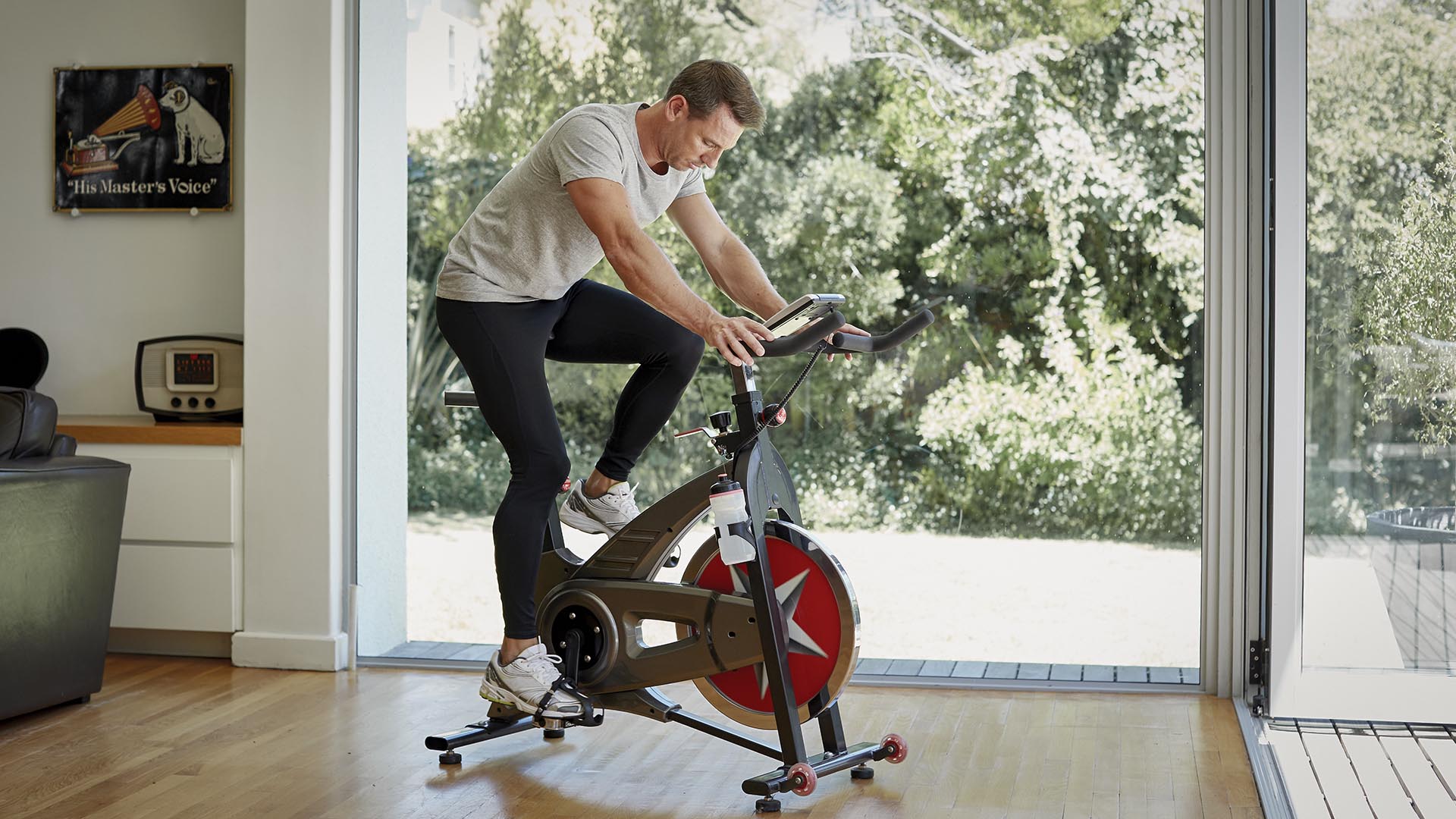Indoor cycling is growing in popularity in the cycling community but also globally in the health and fitness world. Companies like Peloton, Nordic Trac, and Zwift have come up with really innovative programs that have made indoor cycling fun. As a physical therapist, I have treated countess patients that have had pain and problems due to spin class or a home exercise bike. Just like road and mountain bikes, indoor cycles can be fit for optimal performance and pain relief. Once these measurements are taken they can be applied to any similar bike so you can always have the right fit.
The Seat
Step one is to get the right seat height. At the bottom of the pedal stroke with the sole of the shoe parallel the floor, the knee angle should be between 20 and 30 degrees. Next, set the seat fore aft to get the bottom of the knee cap over the axle of the pedal with the crank arms parallel to the floor (mid stroke). This will assure maximum force transference from the upper leg through the lower leg and into the pedal. Finally the seat tilt should be set to 0 to start, then roll the pelvis forward and backward. The pelvis should roll comfortably. If there is too much pressure as you roll forward, the seat may need to angle downward. If there is too much pressure on the tailbone as you roll backward, the seat may need to be tilted upward.
The Bars
Finally the bars need to be set to match the cockpit. Set height so the center of the stem is even to the center of the knee cap with the knee angle about 45 degrees from the top. Set the reach so the upper body angle of the shoulders is about 90 degrees and the elbows are bent to 20 to 30 degrees. The shoulders should be relaxed, elbows soft, and the neck in a neutral position.
The Perfect Fit
It is always best to have your bike fit by a professional, especially if you are riding once a week or more. Call us at KinetiChain for more information or to schedule an appointment.



